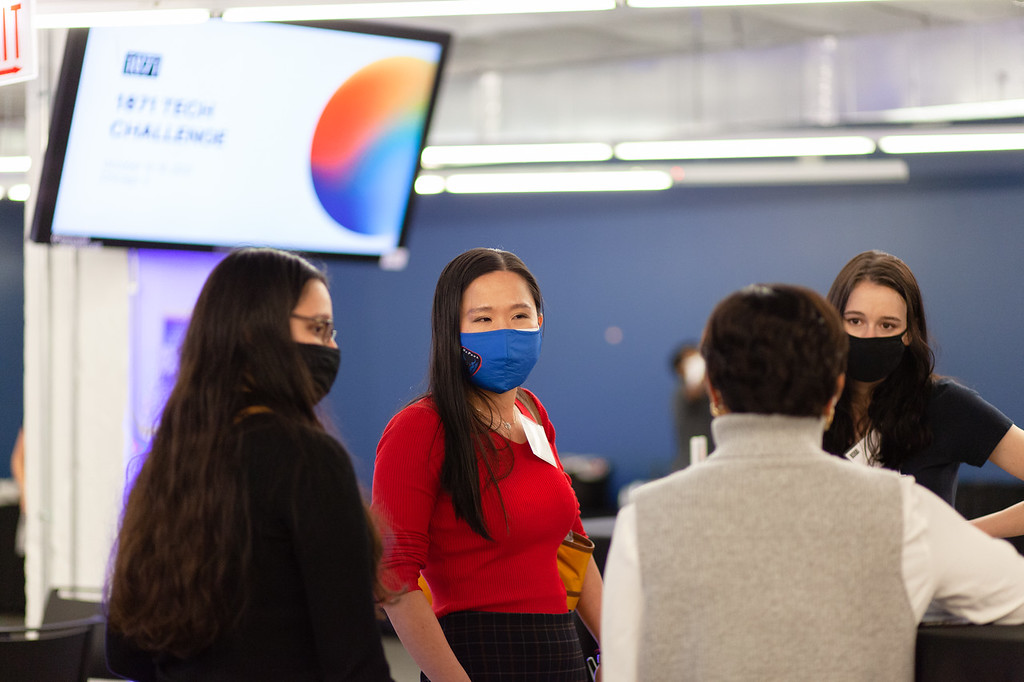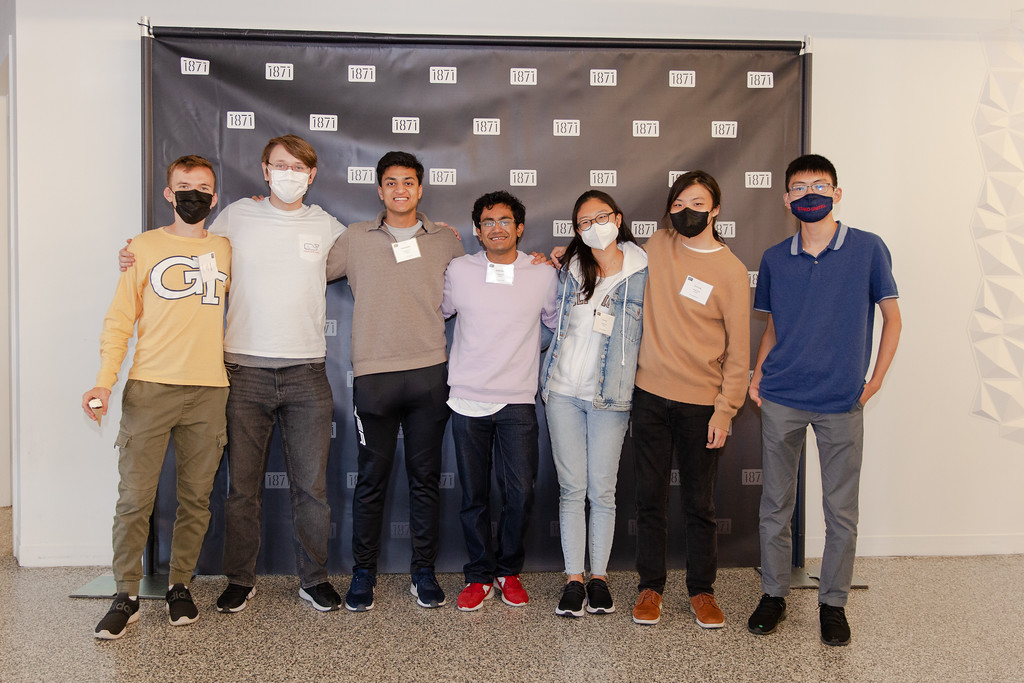Food Foundry Accelerator, by Relish Works and Gordon Food Service, Announces Their Fourth Cohort Servicing Innovative Food Industry Startups Headed Towards Food Service
CONTACT
Food Foundry
Paige Ellen, Manager of Startup Initiatives
517-667-8809
Relish Works, in partnership with Gordon Food Service and 1871, launches their fourth cohort of the Food Foundry with five finalists, food startups headed toward food service.
CHICAGO (January, 5th 2021) — Food Foundry, a Relish Works and Gordon Food Service accelerator program launched in partnership with 1871, announce the eight food startups that will join their fourth cohort in January 2022.
After three successful cohorts working alongside food technology companies, Food Foundry is expanding the program focus to include food product companies doing good for people and the planet. Food Foundry aims to be at the forefront of innovation, magnifying impact by helping food and beverage companies grow into foodservice and bringing good-for-you foods to tables across North America.
“Gordon Food Service was founded by visionary entrepreneurs 125 years ago, when we began as a butter and egg delivery service. Entrepreneurship is in our DNA,” said Rich Wolowski, President & CEO of Gordon Food Service. “We are energized by this year’s Food Foundry companies and their novel approaches. We’re thrilled to help magnify their impact and shape the future of this industry we love so much.”

The Food Foundry welcomes the following startups into cohort four:
- Confetti Fine Foods – award-winning vegetable and mushroom chips made from upcycled ingredients with adventurous, globally inspired flavors.
- Down to Cook – makes “Adda Veggie” meal starters that are designed to be mixed with fresh vegetables to create delicious plant-based meals.
- Just Date – making organic sweeteners from whole fruit ingredients. Just Date sweeteners have a low glycemic index, are vegan, nutrient-dense, and packed with antioxidants.
- Misfit Foods – built for health-conscious omnivores, pairing humanely-raised meats with delicious nutritious veggies. Their first two products are chicken sausages and ground beef mixes.
- Mr. Bing – capturing the most exciting elements of modern Chinese food and interpreting them into accessible condiments and ingredients for the modern American foodie and everyday cook.
- San Franola – making unprocessed cereal and snacks. For schools. For families. For Everyone.
- Stellar Eats – Canada based company creating a line of unique baking mixes made with 8 or less real food ingredients. Making healthy eating easy, enjoyable, and empowering.
- Tomato Bliss – making a new kind of tomato soup, one with natural sweetness and umami flavor that comes from premium heirloom tomatoes and globally-inspired spices.
Throughout the selection process, Food Foundry sought startups working to shape the future of food with fresh approaches. Each company in the latest cohort is creating products with sustainability, social impact, and health at the forefront.
“Innovation is at the heart of everything we do at Relish Works. We are thrilled to watch the growth and success unfold, through close collaboration between our newest cohort of Food Foundry companies, and our colleagues and food industry leaders at Gordon Food Service,” said Mandy Tahvonen, VP & Managing Director of Relish Works.
The Food Foundry program gives startups an opportunity to learn the intricacies of foodservice as a distribution channel. Startups will gain an understanding of how to best position their business to be successful in food service through mentorship, workshops, and learning with experts in the industry at Gordon Food Service. The program kicks off January 24th and will culminate with a showcase event on May 12th, 2022.
Additionally, Food Foundry welcomes following Entrepreneurs-in-Residence with extensive knowledge in food and beverage to support cohort members as mentors throughout the course of the program: Heather Saffer, Founder of Dollop Gourmet, Erika Boll, Founder of The Toasted Oat, Inc., and Andy Sauer, Founder of Hilo Nutrition.
“Gordon Food Service is a long-time and dedicated partner in our mission to provide growing startups with the tailored resources, community support, and industry-specific education and connections they need to survive and thrive,” said Betsy Ziegler, CEO of 1871. “We’re proud to continue to grow our collective impact as we welcome the newest cohort of Food Foundry, whose members are leading the way in developing innovative, sustainable food and beverages.”
To learn more about Food Foundry’s fourth cohort or its member companies, please visit www.thefoodfoundry.com, or contact paige@thefoodfoundry.com.
###
About Food Foundry
Food Foundry is a Chicago-based accelerator program by Relish Works and Gordon Food Service designed to support, connect, and propel innovative startups who are rethinking the food industry. Built in partnership with 1871, our program offers access to national foodservice business resources, distribution and supply chain resources, advanced curriculum, access to restaurant operators, mentors, and more.
About Relish Works
Relish Works is a Chicago-based innovation hub leading disruption in the food and foodservice industry. Its purpose is to generate innovative solutions to the most pressing customer problems in the foodservice industry by creating partnerships, designing new solutions, and making strategic investments. Relish Works has deep professional expertise in human-centered design, customer experience, strategy, and early-stage investing.
About Gordon Food Service
For 125 years, Gordon Food Service has delivered uncompromising quality and heartfelt service to our customers. We began as a simple butter-and-egg delivery service, and have grown to become the largest family business in the foodservice industry by upholding the same approach since 1897—remaining passionately committed to the people we serve. Today, we serve foodservice operators in the Midwest, Northeast, Southeast, and Southwest regions of the United States and coast-to-coast in Canada. We also operate more than 175 Gordon Food Service StoreⓇ locations in the U.S. By partnering with organizations from across industries—healthcare to education, independent and chain restaurants, and event planners—we help our customers create food experiences that people choose, enjoy, and remember. To learn more about Gordon Food Service, visit gfs.com.
About 1871
1871 is Chicago’s technology hub and the #1 ranked private business incubator in the world. It exists to inspire, equip, and support early stage, growth scalers and innovators in building extraordinary businesses. 1871 is home to ~450 technology startups, ~300 growth stage companies, and ~1,500 members, and is supported by an entire ecosystem focused on accelerating their growth and creating jobs in the Chicagoland area. The member experience includes virtual and in person access to workshops, events, mentorship, and more. The nonprofit organization has 350 mentors available to its members, alongside access to more than 100 partner corporations, universities, education programs, accelerators, venture funds and others. Since its inception in 2012, more than 650 alumni companies are currently still active, have created over 11,000 jobs, and have raised more than $1.65 billion in follow-on capital.





